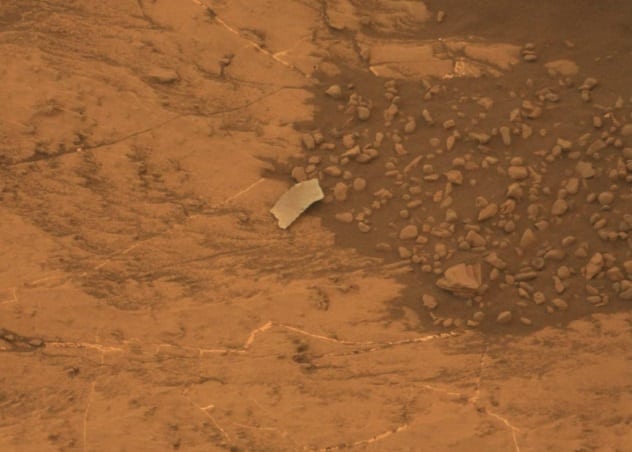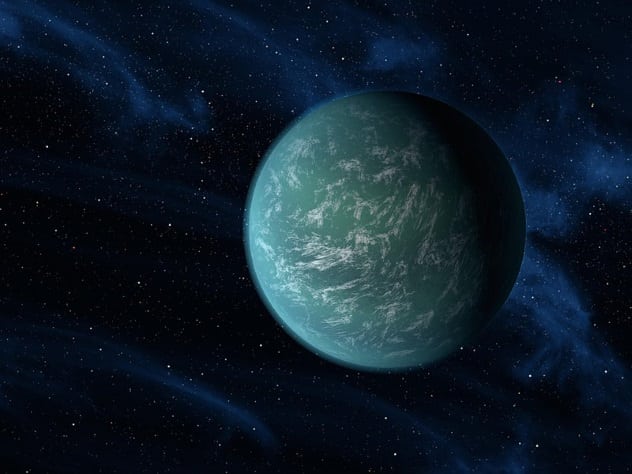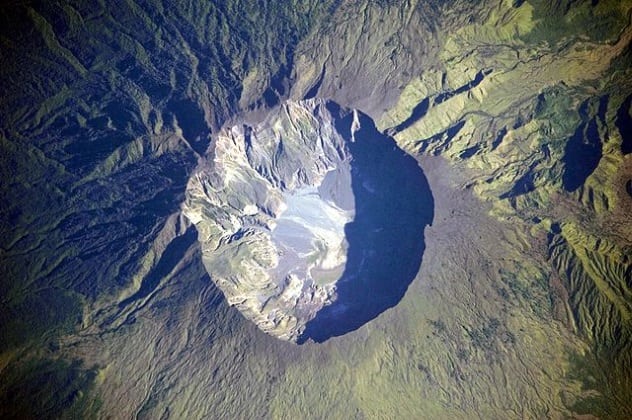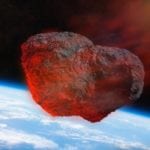 Misconceptions
Misconceptions  Misconceptions
Misconceptions  History
History 10 Amazing Roman Epitaphs
 Weird Stuff
Weird Stuff 10 Niche Subcultures That Are More Popular Than You Might Think
 Mysteries
Mysteries 10 Tragic Disappearances and Deaths in Joshua Tree National Park
 History
History 10 Ways Childhood Really Sucked in the Old West
 Music
Music 10 Name Origins of Famous Bands from the 1990s
 Religion
Religion 10 Biggest Turnarounds by the Catholic Church
 Weird Stuff
Weird Stuff 10 Unbelievable Times Laws Had Unintended Consequences
 Humans
Humans Ten Historic Women Who Deserve Way More Credit Than They Got
 Movies and TV
Movies and TV 10 Films That Spawned Major Lawsuits
 Misconceptions
Misconceptions 10 Phony Myths and Urban Legends That Just Won’t Die
 History
History 10 Amazing Roman Epitaphs
 Weird Stuff
Weird Stuff 10 Niche Subcultures That Are More Popular Than You Might Think
Who's Behind Listverse?

Jamie Frater
Head Editor
Jamie founded Listverse due to an insatiable desire to share fascinating, obscure, and bizarre facts. He has been a guest speaker on numerous national radio and television stations and is a five time published author.
More About Us Mysteries
Mysteries 10 Tragic Disappearances and Deaths in Joshua Tree National Park
 History
History 10 Ways Childhood Really Sucked in the Old West
 Music
Music 10 Name Origins of Famous Bands from the 1990s
 Religion
Religion 10 Biggest Turnarounds by the Catholic Church
 Weird Stuff
Weird Stuff 10 Unbelievable Times Laws Had Unintended Consequences
 Humans
Humans Ten Historic Women Who Deserve Way More Credit Than They Got
 Movies and TV
Movies and TV 10 Films That Spawned Major Lawsuits
10 Offbeat Stories You Might Have Missed This Week (8/25/18)
As the week winds down, we have a few minutes to review some of the more notable stories that might have passed you by. Click here for some of the more serious stuff, and read on for news items that lean on the weird side.
This has been a particularly bizarre week for the art world. We have a case of mistaken identity, an art lover swallowed by the void, and a painting made by AI. Meanwhile, scientists tackled a few space mysteries. They identified a weird object on Mars but remain puzzled by Steve the skyglow.
10 NASA Identifies PPFOD

Mars is currently experiencing a dust storm that might destroy the Opportunity rover. Meanwhile, Curiosity is still roaming the planet and sending us back some cool pictures. Over a week ago, the spacecraft transmitted a peculiar photograph which featured an unusual, flat object. Scientists named it the Pettegrove Point Foreign Object Debris (PPFOD). After a few days of head-scratching, they finally managed to identify it.
Unsurprisingly, people thought (or, rather, hoped) that it was some kind of mysterious remnant of an ancient Martian civilization. NASA personnel were more concerned that it was a piece of the rover itself which had fallen off. As it turns out, it was just an oddly shaped flake of rock.
The Curiosity team examined the item using a tool called ChemCam RMI onboard the rover.[1] The analysis revealed the object to be a rock sliver which is of a different color compared to the surrounding sands and debris. Why this is, NASA scientists aren’t exactly sure, but for now, they are just relieved that Curiosity isn’t falling apart.
9 Falling Into A Bottomless Pit

An Italian man fell down a hole in Portugal. On its own, this doesn’t sound particularly newsworthy, but the circumstances make it unique. The “chasm” in question is a Looney Tunes-style circular black hole which represents the centerpiece of an art installation by Anish Kapoor titled Descent into Limbo.[2]
The work is featured at the Serralves Contemporary Art Museum in Porto. Created in 1992, Descent into Limbo consists of a cube-shaped room with a big hole in the middle. Due to its intense blackness, it can appear like the opening is, in fact, just a black circle painted on the floor. However, it is quite real, as one art lover found out the hard way.
Last Monday, an Italian man in his sixties fell down the hole and sustained minor injuries. Luckily for him, the pit is just 2.5 meters (8 ft) deep and not an actual void, as it suggests. A spokesperson for the museum said that visitors have to sign a safety disclaimer before entering the installation and that they are joined by a staff member inside the cube. However, they did not specify if the man fell by accident or if he purposely jumped, thinking the hole was painted on.
8 Black Sarcophagus Continues To Intrigue

We’ve already talked a fair bit about the black sarcophagus uncovered last month in Alexandria. First, people got very excited about who could be inside, even speculating that it was the tomb of Alexander the Great. Then they were disappointed when the coffin was opened to reveal three skeletons swimming in sludge thanks to a leak. Then, for some bizarre reason, people started petitioning the Egyptian government to let them drink the vile liquid.
Now, archaeologists have had some time to examine the remains and came back with some interesting findings. The bodies belong to two men and a woman who appear to have been deposited at different times. This somewhat puts the kibosh on the idea that they were soldiers. The skeletons have been dated to the Ptolemaic or early Roman period.
One of the male skulls has a hole in it which, initially, was believed to have been caused by an arrow. However, careful examination showed that the wound healed and the man lived on for years afterward. This means the hole was likely caused by trepanning.[3]
This practice was common in the ancient world, but we only know of a few examples from Egypt, making this a special find. The next steps involve performing DNA tests and CT scans on the bones and possibly determining if the three people were related. Meanwhile, the biggest mystery remains—why were they put in a large, black sarcophagus in the first place?
7 Steve The Sky Ribbon Mystifies Astronomers

In 2016, scientists learned of a new type of aurora dancing in the night sky, shaped like a thin ribbon of white and purple light. Now, however, a new study published in Geophysical Research Letters argues that the event is not an aurora at all but rather an entirely new celestial phenomenon.
Researchers named the strange sighting Strong Thermal Emission Velocity Enhancement (Steve), and now they are arguing that it is not an aurora because it uses a different atmospheric process to generate its lights. We are not sure what that process is.
Auroras are caused by solar flares, which discharge a lot of particles on Earth. They collide with molecules from our atmosphere and create the sky spectacle we know as the Northern (or Southern) Lights. However, a team led by astronomer Bea Gallardo-Lacourt from the University of Calgary used data provided by NASA’s THEMIS mission and NOAA’s Polar Orbiting Environmental Satellite to observe a Steve from 2008.[4] And while the purple light was there, there was no particle precipitation from a solar flare. Therefore, they argue that the phenomenon, which they refer to as a “skyglow,” is created by a different mechanism.
Scientists are looking for more information on Steve and have actually started a crowdsourcing project called Aurorasaurus. They would like people to send in any pictures they have of Steve (the skyglow, not the guy from work).
6 Survival Of The Laziest

A new study from the University of Kansas suggests that laziness is a viable survival strategy, from an evolutionary perspective. Not only that, but less energetic species have a higher chance of continuity compared to their more proactive cousins.
At the very least, that seems to be the case for mollusks. Researchers examined roughly 300 species of bivalves and gastropods from the Western Atlantic Ocean going back the last five million years. They calculated the resting metabolic rates for each species and discovered that a high metabolism increased the chances of extinction. In fact, most of the 178 extinct species analyzed had a markedly different energy usage compared to the extant mollusks.[5]
Lead researcher and professor of ecology and evolutionary biology Bruce Lieberman said that the most probable explanation for this phenomenon is that lazier species have lower energy requirements. This could come in handy during rough patches when food becomes scarce.
The next step would be to see if a high metabolism played a role in the extinction of other kinds of animals, including land mammals. If researchers could prove a correlation, the concept could be used by conservationists to better predict which species are at risk in the future.
5 Scottish Chemist Mistaken For French Architect In Russian Park

If you are walking through St. Petersburg and are admiring some of the neoclassical buildings like the Old Stock Exchange, you have 18th-century architect Jean-Francois Thomas de Thomon to thank. In fact, he was commemorated in 2011 with a life-size bronze sculpture in Alexander Park, alongside other great architects of the Russian Empire. There’s just one problem, though—the statue isn’t him.
The sculpture is the work of artist Alexander Taratynov and is part of a series of seven carvings called The Architects. However, as Russian newspaper Fontanka recently pointed out, the statue doesn’t depict French architect Jean-Francois Thomas de Thomon but rather Scottish chemist Thomas Thomson.[6]
Taratynov said he obtained the image from Wikipedia but that the St. Petersburg tourism site confirmed the likeness. Even so, it still took seven years before someone realized the gaffe.
4 AI Painting Goes To Auction

Christie’s is set to become the first auction house to sell art that was created using artificial intelligence.
The work is the brainchild of Paris-based art collective Obvious and their machine learning algorithm called Generative Adversarial Networks (GAN). Together, they assembled a set of 11 portraits depicting the noble Belamy family. And while Obvious came up with the names and backgrounds of the family members, their likenesses are entirely the work of GAN.
According to Hugo Caselles-Dupre, one of the collective’s founders, GAN consists of two parts. First is the Generator, which produces the images using a database of over 15,000 real portraits painted between the 14th and 20th centuries. Then comes the Discriminator, which attempts to differentiate between the works of man and AI.[7] When a portrait manages to fool the Discriminator, that’s when they have a result.
Portrait of Edmond Belamy will go on sale in October at Christie’s Prints and Multiples auction. Obvious believes that GAN’s painting will sell for $8,000 to $11,500. Caselles-Dupre is expecting the event to divide the art world in a similar way to photography back when it first appeared.
3 The Universe Is Filled With Water Worlds

Water worlds are far more common than we previously thought, suggests a new study from Harvard University. In fact, over a third of all midsize exoplanets should be water-rich, according to a new model developed by the university’s Department of Earth and Planetary Sciences.
The team used data provided by NASA’s Kepler telescope and the ESA’s Gaia spacecraft to examine the relationship between a planet’s mass and its radius. Their model suggests that planets roughly the size of Earth tend to be rocky, while giant planets are, primarily, gaseous. Every world in the middle, approximately two to four times the size of Earth, can be up to 50 percent water by weight.[8] For comparison, our blue marble is just 0.02 percent water by weight.
Study leader Li Zeng believes that these planets have layers of water in different states. First, the surfaces, which reach temperatures of hundreds of degrees Celsius, will be shrouded in a water vapor atmosphere. Then comes a layer of liquid water followed by high-pressure ices that encase the solid, rocky core. He is hopeful that the James Webb Space Telescope, due for launch in 2021, will be able to offer a more definitive characterization of some of these worlds.
2 Penguin Erector Wanted

It was a roller coaster of emotions this week for some people as they first learned about their new dream job, only to discover later on that it doesn’t actually exist. This happened after a post went viral on social media which claimed that Edinburgh Zoo employed a penguin erector whose entire job involved picking up birds that have fallen over and couldn’t get up.
Like most good stories, this one started at the pub. Employee Shauni Humphries heard a story from a patron who claimed to hold that peculiar position at the zoo. He said that planes often flew above the penguin enclosure, and the curious animals raised their heads to see them and fell over. It was his charge to go around and lift them back up.[9]
Enthralled with the idea of working as a “penguin erector,” Shauni shared the story on Twitter, where it went viral. Her original tweet was shared and liked hundreds of thousands of times by people who were fascinated by the idea.
Eventually, word reached the Edinburgh Zoo, and, to the dismay of many, it dispelled the idea of a “penguin erector.” Penguins don’t track airplanes, and when they do fall over, they don’t need help getting up.
1 How A Volcano Foiled Napoleon

A recent study published in Geology places part of the blame for Napoleon’s infamous defeat at Waterloo on one of the most powerful volcanic eruptions in history.
On June 18, 1815, Napoleon was bested at the Battle of Waterloo, thus putting an end to the Napoleonic Wars. Since then, many historians and military experts have given various reasons for the French emperor’s defeat. One of the main factors seemed to be the dreadful weather which slowed down Napoleon’s troops and delayed his attack.
A couple of months prior to this, Mount Tambora erupted on the island of Sumbawa in the Dutch East Indies, modern-day Indonesia. It was a powerful, Vesuvian eruption which dispersed ash all over the world and lowered global temperatures, leading to 1816 being referred to as the Year Without a Summer. And that same ash could have helped bring an end to the Napoleonic Era.
The idea that Mount Tambora’s eruption caused the foul weather during the battle has been around for a while. Now, however, Dr. Matthew Genge from Imperial College London has the proof. His paper shows that volcanoes can hurl ash up to 100 kilometers (62 mi) into the atmosphere, much higher than previously thought. Furthermore, that ash “short-circuited” the ionosphere and created a pulse of cloud formation which brought heavy rains to Europe.[10] Weather records from 1815 are scarce, but records from later eruptions seem to back up the theory.
Read more offbeat stories you might have missed from August 18, 2018 and August 11, 2018.








